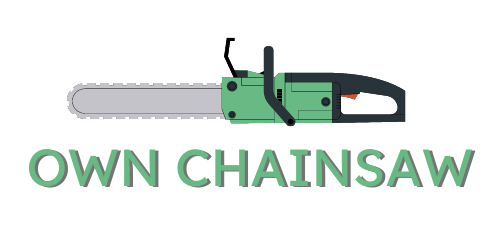When it comes to the smooth operation of your chainsaw, every link matters. But what happens when one of those links decides to rebel, causing your saw to seize up at the most inconvenient moment?
It’s a frustrating scenario no chainsaw owner wants to face. That’s why we’ve created the ultimate guide on removing a stubborn link from your chainsaw chain.
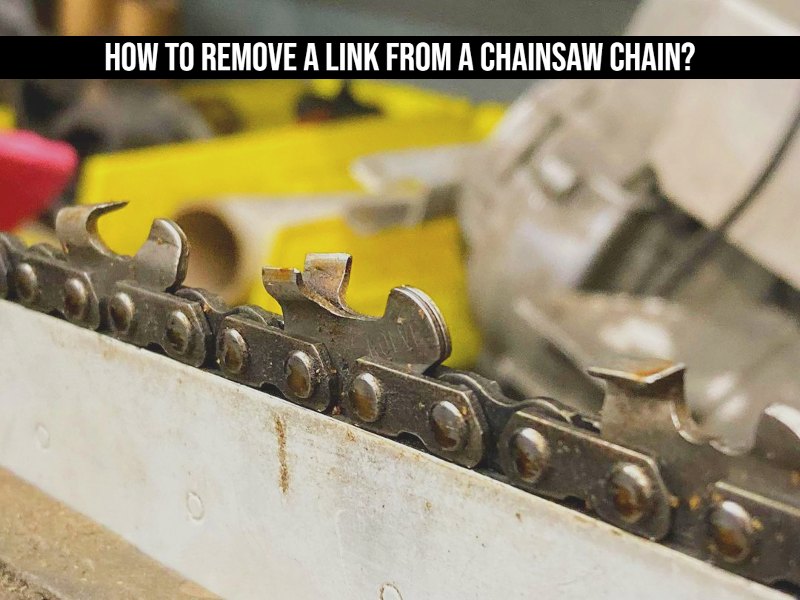
When should I remove a chainsaw link?
There are several reasons why you might want to remove a chainsaw link:
1. Chain Adjustment – Over time, chainsaw chains can stretch and become loose. Removing a link allows you to adjust the chain tension and ensure optimal performance during operation.
2. Repairing Damaged Chains – Taking out a damaged or worn-out section of a chain can allow you to repair or replace it without having to replace the entire chain.
3. Chain Replacement – Sometimes, you may want to replace the chain with a different type or size to suit specific cutting needs. Removing a link allows you to customize the chain length to fit your chainsaw properly.
4. Resizing the Chain – In certain cases, the chainsaw bar may be shorter or longer than the current chain length. By removing or adding links, you can resize the chain to match the bar length accurately.
5. DIY Chain Assembly – By removing links from chains, you can create custom chains by connecting sections and securing them using rivets or connectors.
How To Remove A Link From A Chainsaw Chain? Ultimate Guide
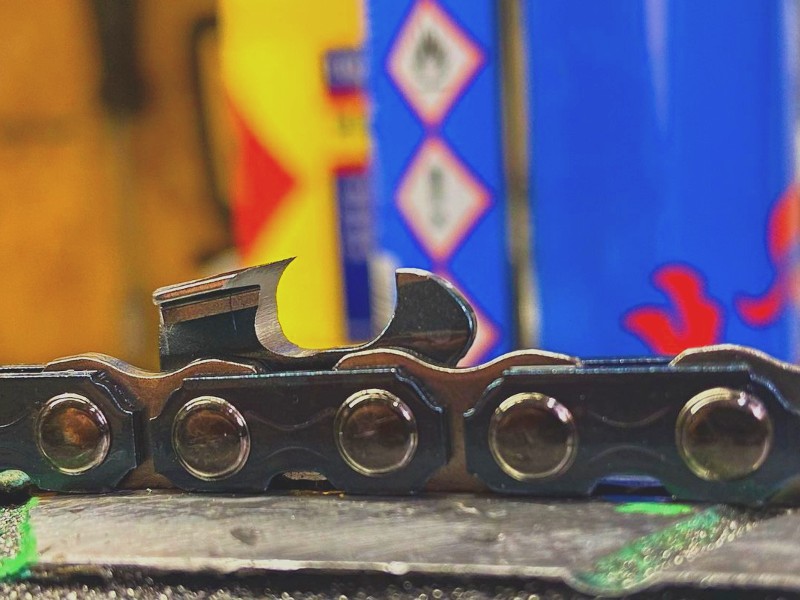
Tools Required:
Chain Break: A device used for pushing out the links and breaking the chain.
Swedging Device: Used to roll the edges of the pin back together.
Replacement Master Link: A master link with a locking device, used as an alternative to swedging.
To remove a link from a chainsaw chain, Follow these steps:
1. Assess Chain Condition
If the chain is stretched and no longer tensions up, it indicates a problem with the bar tension adjustment. Shortening the chain will not solve this issue. If the drive teeth are worn or the chain is stretched, they will not align properly on the sprocket, leading to rapid deterioration or damage. In such cases, shortening the chain is not recommended.
2. Match the Chain Type
Ensure that you have the same type of chain. While using a chain from a different chainsaw with a different length bar may be acceptable, the chain must have the same cutting teeth, the same number of drive sprockets, and the same number of chain links.
3. Identify the Master Link
The master link is usually a different color link on the chain. Inspect both sides of the chain to find it. Once identified, this is the link you want to remove.
4. Using the Chain Break
Place the chain in the groove slot of the chain break, ensuring it is properly aligned. Crank the handle down to push the pin through the link. This process breaks and swedges the link, with swedging referring to rolling the edges of the pin to hold the chain together.
5. Removing the Links
Work on one link at a time. Screw down the chain break to push out one link, and repeat the process to remove additional links as needed. Take care not to mix up the drive teeth and maintain the correct spacing dictated by the chain. If there is an extra link between the drive teeth, ensure correct spacing.
6. Cutting the Chain
Determine the desired length of the chain and cut it accordingly. Cut out the required length, aligning the cut with a correlating tooth to maintain the same sprocket count for the drive teeth.
7. Reassembling the Chain
Insert the link back through the holes, placing a plated edge over it. Use a swedging device or a hammer and punch on a block of steel to roll the edges of the pin back over. This step prevents the master link from coming off and secures the chain.
Chainsaw Chain Link Removal: Without Master Link?
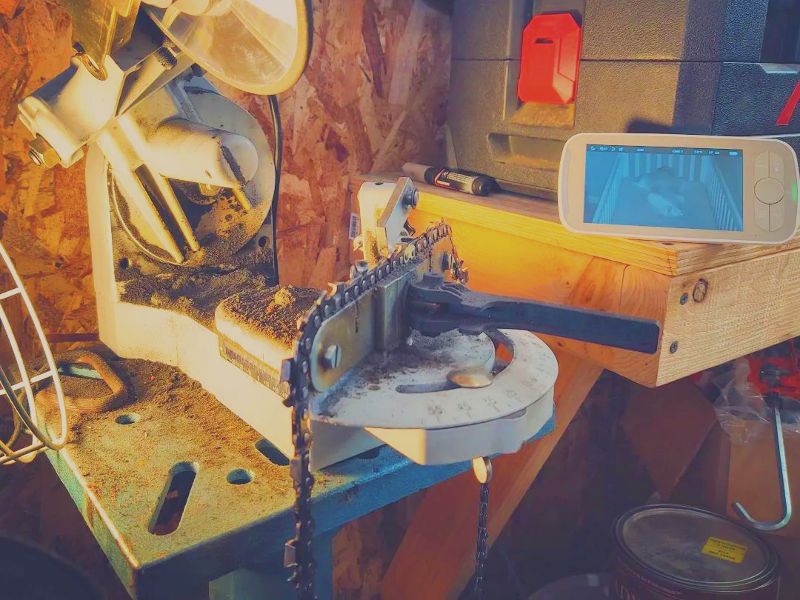
If your chainsaw chain does not have a master link, removing a link can be a bit more challenging but still possible.
Here’s a general procedure to take a link out of a chainsaw chain without a master link
Tools Required:
- Vice or clamp
- Flathead screwdriver or punch
- Hammer
- Bench grinder or file (optional)
Procedure:
1. Secure the Chain
Use a vice or clamp to secure the chainsaw chain firmly in place. This will prevent it from moving during the link removal process.
2. Identify the Link
Examine the chain to identify the specific link you want to remove. Typically, it is recommended to remove links from the middle of the chain rather than at the ends.
3. Remove the Side Plate
Locate the side plate that covers the link you want to remove. It is usually secured by small rivets or retaining clips. Use a flathead screwdriver or punch to carefully drive out the retaining pins or remove the retaining clips, allowing the side plate to come off.
4. Separate the Links
Once the side plate is removed, you can separate the two links on either side of the link you want to remove. This can be done by flexing the chain slightly and pulling the links apart.
5. Remove the Rivet
With the links separated, focus on the rivet that holds the link you want to remove in place. Use a punch and a hammer to drive out the rivet from the chain. Start by tapping it lightly to loosen it, then gradually increase the force until the rivet comes out completely.
6. Adjust Chain Length
Adjust the chain length after removing the link to ensure proper tension and fit on the chainsaw. If necessary, additional links can be removed or a master link can be connected if available.
7. Reassemble the Chain
Once the desired length is achieved, reassemble the chain by connecting the remaining links. Ensure that the chain is properly aligned and that the rivets are securely installed.
8. Check Chain Tension
Before using the chainsaw, check the tension of the reassembled chain. It should be adjusted according to the manufacturer’s recommendations to ensure safe and efficient operation.
Safety Precautions:
When removing a link from a chainsaw chain, it is important to take the following safety precautions:
1. Emphasize Safety Equipment – When embarking on the endeavor of removing a link from a chainsaw chain, prioritizing your safety should be paramount. To safeguard yourself against potential harm from flying debris or accidental contact with the chain, it is crucial to equip yourself with protective gloves, eyewear, and appropriate attire.
2. Firmly Secure the Chainsaw – Taking proactive measures to firmly secure the chainsaw chain is of utmost importance. Employ the use of a vice or clamp to firmly immobilize the chain, thereby minimizing any unintended movement or instability throughout the link removal process.
3. Adhere to Manufacturer’s Guidelines – It is essential to strictly adhere to the instructions provided by the chainsaw manufacturer. Different chainsaw models and chain types may necessitate specific guidelines for link removal. By conscientiously following the manufacturer’s instructions, you ensure that the task is executed by the recommended practices within the industry.
4. Maintain a Safe Distance from Others – When working on the chainsaw chain, ensure no individuals are near you. Keep all observers away from the work area, especially when felling trees, to avoid accidents or injuries.
5. Avoid Fatigue or Impairment – Do not operate a chainsaw if you are fatigued or impaired by substances that can impair your judgment or coordination. Using a chainsaw while tired is not recommended, nor is using any drugs or alcohol, including prescription medications, which might impair your ability to operate it safely.
6. Maintain Low Operational Position – Exercise caution and avoid situations where the chainsaw will be held above your waist during operation. A chainsaw should always be held below the waist level, as working with a chainsaw above the waist level significantly increases the risk of accidents.
7. Verify Chain Tension – Before utilizing the chainsaw, it is crucial to inspect and adjust the tension of the reassembled chain. Adhere to the manufacturer’s recommendations to ensure optimal safety and efficiency during operation.
FAQs
How to shorten the chainsaw chain?
The initial stage of shortening a chainsaw chain involves detaching the chain from the saw itself. Once separated, the subsequent step entails identifying the specific link that necessitates removal to attain the desired length. A chain breaker tool is used to remove the designated link, allowing the required adjustment to be made. Afterward, reassemble the chain, taking care to ensure proper alignment and engagement. It is crucial to double-check the tension of the reassembled chain before resuming the use of the chainsaw.
What should I do if I accidentally damage my chainsaw chain while removing a link?
If you have damaged your chainsaw chain by removing a link, the best course of action is to replace the damaged chain with a new one. Continuing to use a damaged chain can be dangerous and cause further damage to your chainsaw. It’s important to always follow proper safety procedures when working with a chainsaw. Additionally, it’s a good idea to have spare chains on hand in case of any unexpected damage or wear.
How to find the master link on a chainsaw chain?
To recognize a master link in a chainsaw chain, you need to look for a link that is different from the other links. The master link will usually have a different shape or color than the other links. It may also have markings or numbers on it that distinguish it from the rest of the chain. You can remove or install your chainsaw chain using the master link once you’ve located it. Avoid damaging your chainsaw or chain itself by working with the correct link.
Can I remove more than one chainsaw link at a time?
Yes, you can cut more than one link off the chainsaw chain, but it’s important to keep in mind that removing too many links can cause the chain to become loose and potentially dangerous. It’s recommended to only remove one or two links at a time to ensure proper tension and performance of the chain.
Can I reuse the link that I removed from my chainsaw chain?
It is not recommended to reuse a link that has been removed from a chainsaw chain. The chain’s strength and integrity can be compromised due to weakened or damaged links during the removal process. The chain should be replaced or inspected and repaired if necessary. Using a weakened or damaged chain can increase the risk of accidents and injury while operating the chainsaw.
Do I need to lubricate my chainsaw chain after removing a link?
Yes, it is recommended the chainsaw chain be lubricated after removing a link. This is because removing a link can cause the chain to lose its lubrication and become dry, which can lead to increased wear and tear and potentially damage the chainsaw itself. Lubricating the chain after removing a link helps to ensure that it remains properly lubricated and extends the lifespan of the chain.
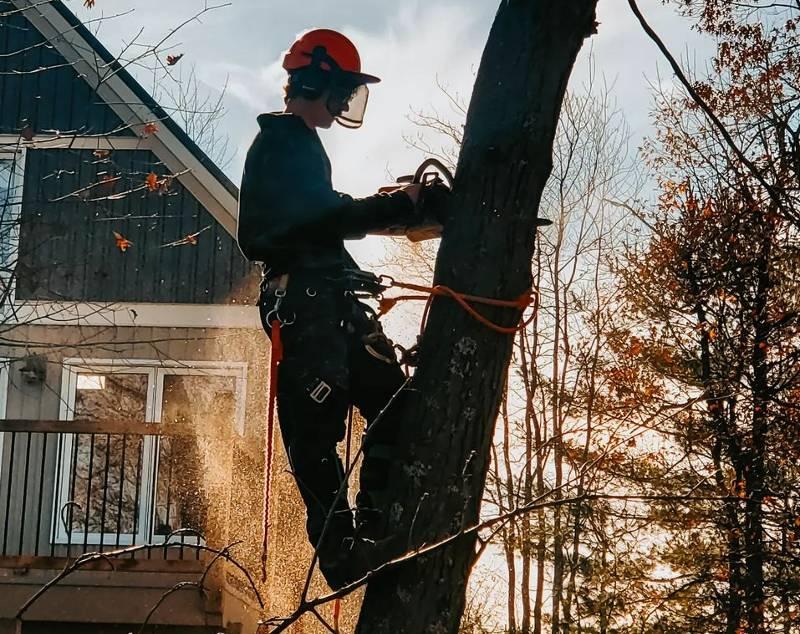
I am Senior Editor and CEO and I have been a chainsaw enthusiast for over 12 years. As a passionate chainsaw enthusiast, I have got a wealth of knowledge and experience with chainsaws, and I am constantly striving to expand my expertise and knowledge. Read More!
